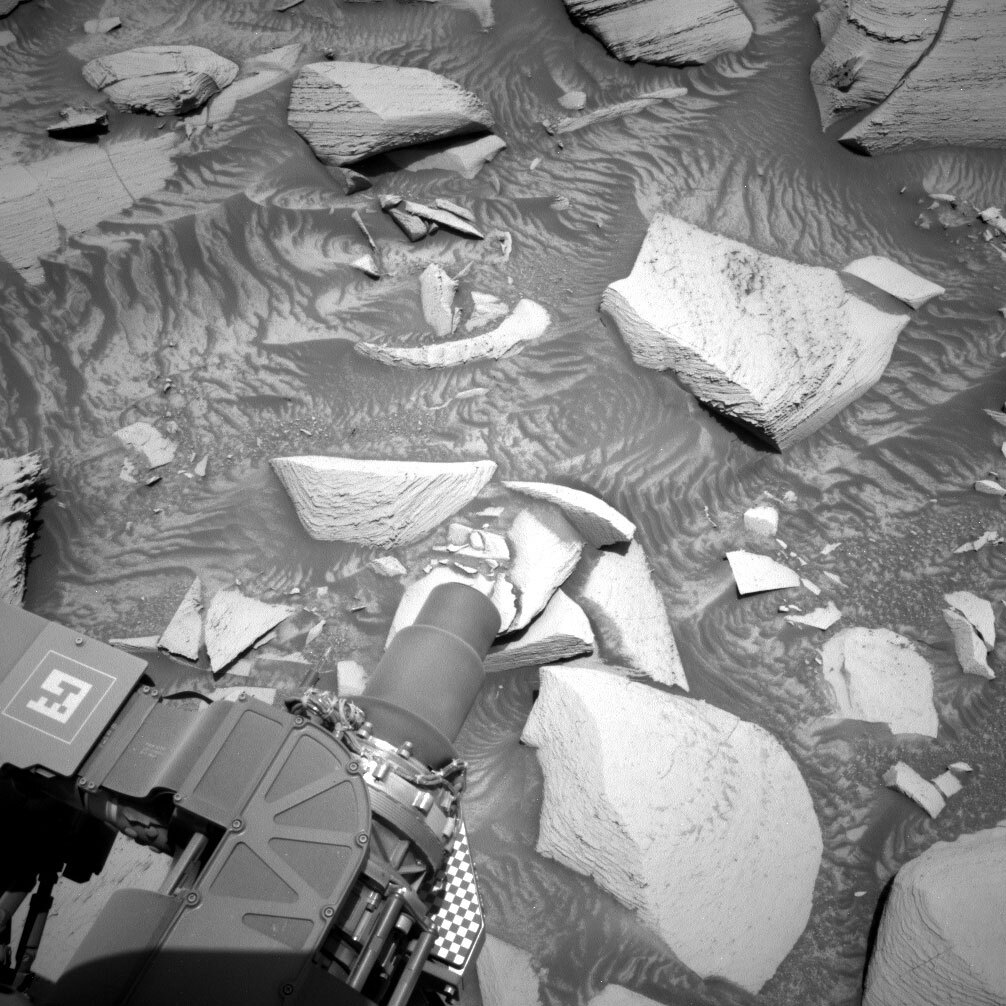3 min read

Earth planning date: Wednesday, January 31, 2024
Curiosity continues her investigation of the light and dark banded sulfate terrain and started this two-sol planning day with several beautiful rocks within arm’s reach. The rover is tantalizingly close to the base of the upper Gediz Vallis ridge and the team is very excited for the spectacular geology ahead.
Today I served as the Geology Keeper of the Plan where I recorded all the details of the science activities that were proposed by science and instrument team members. We kicked off planning for sol 4084 by analyzing a finely layered rock named "Grizzly Lakes" with the dust removal tool (DRT), APXS, and MAHLI imaging. Just beyond "Grizzly Lakes," ChemCam and Mastcam teamed up to characterize a crescent-shaped rock, "Gorge of Despair," to investigate flakey dark material standing in relief on the surface of the rock. The Mastcam team created a mosaic of the workspace in addition to three mosaics that characterized the local bedrock and sand at "Roads End," "Knapsack Pass," and "Rae Lake." Mastcam also took a mosaic of "Round Lake" to image what is likely a small impact crater. We pushed the plan to the limit by including two long distance ChemCam RMI images of a dark band in the distance, and an outcrop along the upper Gediz Vallis Ridge to characterize the variety of rocks. Lastly, we included a Navcam mosaic of the view behind the rover to document several of the layers and buttes in Chenapau, Orinoco, and Kukenan that we drove by in recent months.
And then we hit the road! We planned a 10-meter drive that will put Curiosity on a topographic bench that should provide a mouth-watering vantage point to document a section of the upper Gediz Vallis ridge that is informally named "Fascination Turret." We hope to evaluate the processes that deposited the sediment in this ridge to understand how it formed and how it was later eroded to its present-day form.
On Sol 4085 we scheduled a ChemCam AEGIS activity; AEGIS is an acronym for Autonomous Exploration for Gathering Increased Science and is a mode where the rover identifies and selects a geological target from navigation camera images based on a set of guidelines set by scientists back here on Earth. Several environmental observations are included in the plan to monitor dust devil activity as well as zenith, suprahorizon, and Tau observations that will measure the amount of dust in the atmosphere.
Written by Sharon Wilson Purdy, Planetary Geologist at Smithsonian National Air and Space Museum







